Have you ever felt as though you could walk right into a beautiful landscape painting? Like a magician, the artist has transposed the third dimension onto a flat canvas, and you the viewer are lured into a world made of paint.
Creating a believable landscape painting with depth really isn’t some magic trick, it’s technique. For more than a century, skilled artists have used some of the following techniques to carefully orchestrate a convincing landscape painting. Learn how to pull spectators into your landscapes with these tips.
1. Layering and Overlapping
Layering and overlapping is effective when there is a notable contrast in the shade or texture of two overlapping objects. This creates extra contrast and helps to separate the objects from one another. In the dramatic Edgar Payne painting below, the smaller boats in the foreground layer and overlap and partially hide the larger boats. This creates a sense of depth.
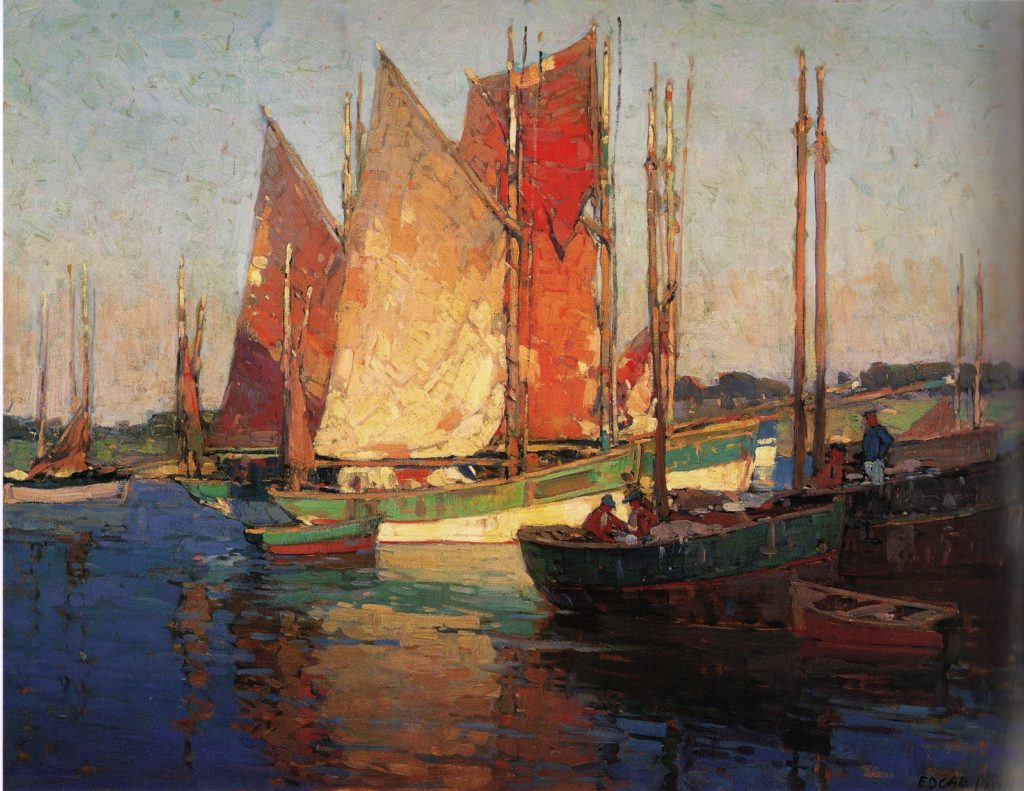
2. The S Curve or Winding Path
A winding river or path that meanders like an S through the painting can be used as a way to move the viewer’s eye. Charles Warren Eaton’s tonal painting, Winter Solitude is an example of this popular technique.
3. Use Diagonals
The artist Lowell Birge Harrison effectively used diagonals in the composition, Moonrise on the Beach. The gently rolling waves angle away and recede from us, creating s sense of depth and distance.
4. Aerial Perspective
A faraway mountain range will usually appear lighter, hazier and bluer as it gets further away. This phenomenon is called, aerial perspective. It is an optical effect caused by the atmosphere on objects viewed at a long distance. Use temperature changes in color to help with aerial perspective. This is a generalization, but warm colors are more attention grabbing, therefore they seem to advance more than cool colors which seem to recede. Learn more about this and composition from Edgar Payne.

5. Foreground Interest
When landscape painting a subject at medium to far distance, it can often appear flat. Include an object of interest in the foreground to enhance the sense of depth. This leads the viewer’s eye into the scene, from the foreground to the subject in the distance. Generally, use less detail, and texture in the background. Renowned artist, teacher and author, John F. Carlson exemplifies this technique in the following painting.
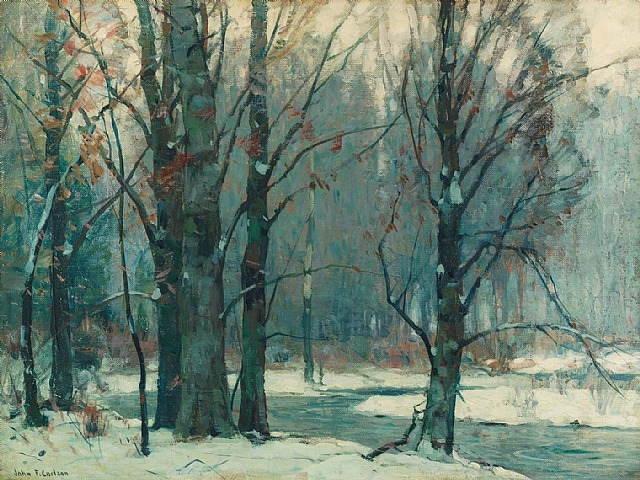
6. Changes in Size
In this landscape painting, The Road to Sluis, Holland, Charles Warren Eaton effectively used the Changes in Size technique. Notice how although in real life we know these trees are the same size, Eaton masterfully crafted them descending away from the viewer. In other words, the trees get smaller as they get further away. The descending trees give a wonderful illusion of depth to this painting.
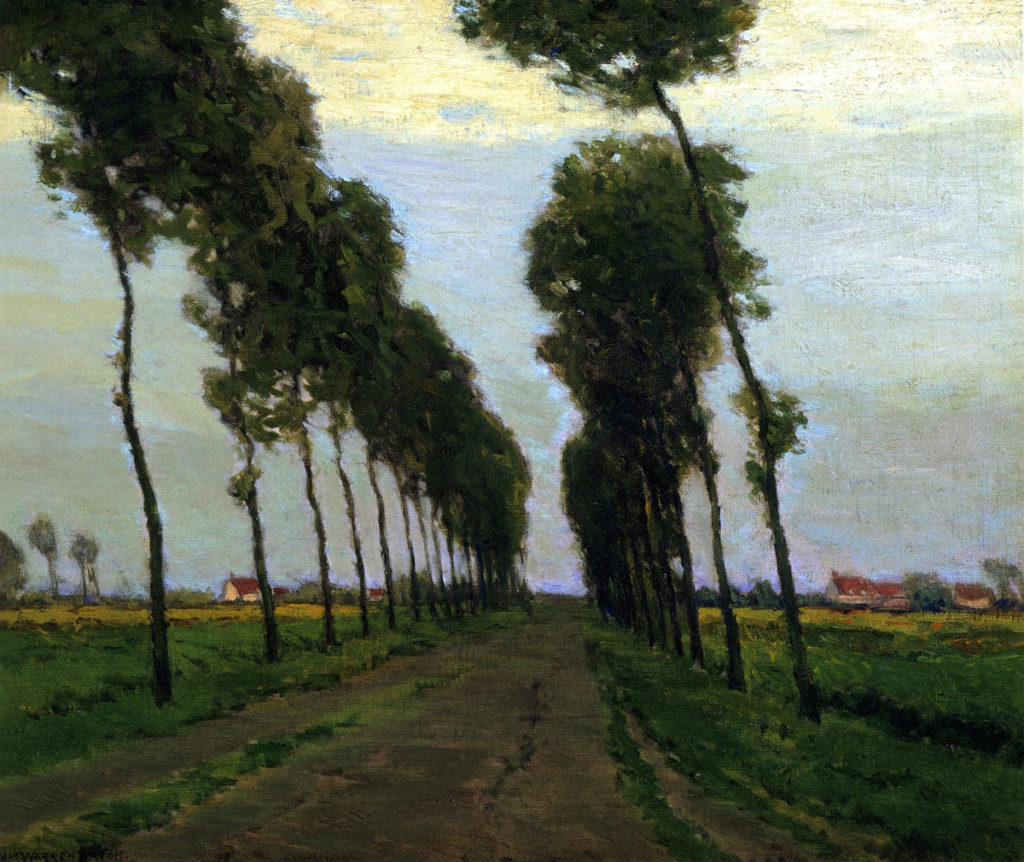
As you study great landscape paintings you will discover that many of them employ one or more of the above techniques. I hope this post helps you create believability and depth in your own landscape paintings. Of course, there are exceptions to every ‘rule’ but, you need to know the rules before you break them!
There are other techniques that can be added to this list. Feel free to share your ideas in the comments.
*****
You can find more great tips on Fine Art Tips Facebook Fan Page, on Twitter and on Pinterest. Be sure and check out and my fine art prints and notecards on Fine Art America. Check out my website, LoriMcNee.com.



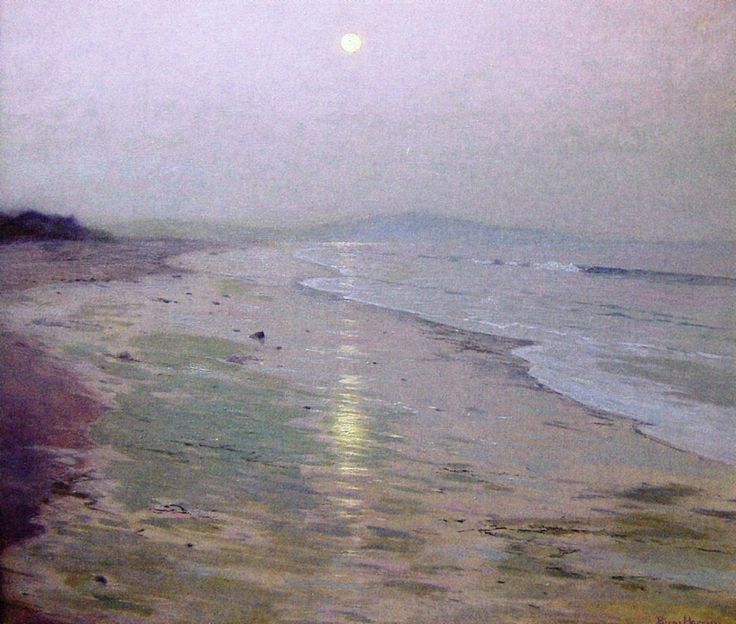

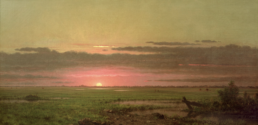
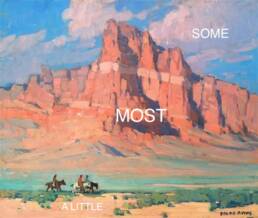
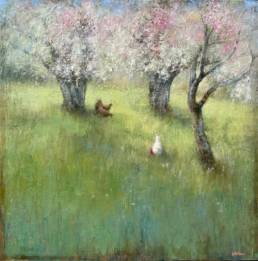
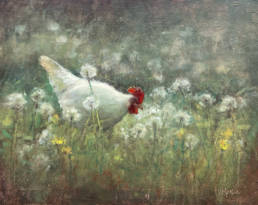
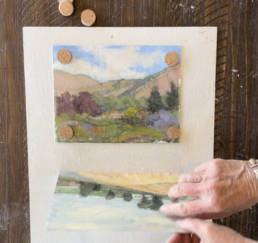
just started to paint with water mixable paint and I am still unsure what is the best medium to use with these paints,being told or reading about linseed oil yellowing your painting makes you wary about using this medium, please advise. many thanks………………………………
Hi Cornelius, I don’t like how slow linseed oil dries. I prefer using Cobra’s Painting Medium and Glazing Medium. The both work really well, and add a lovely gloss and flow to the paint. I hope this helps 🙂